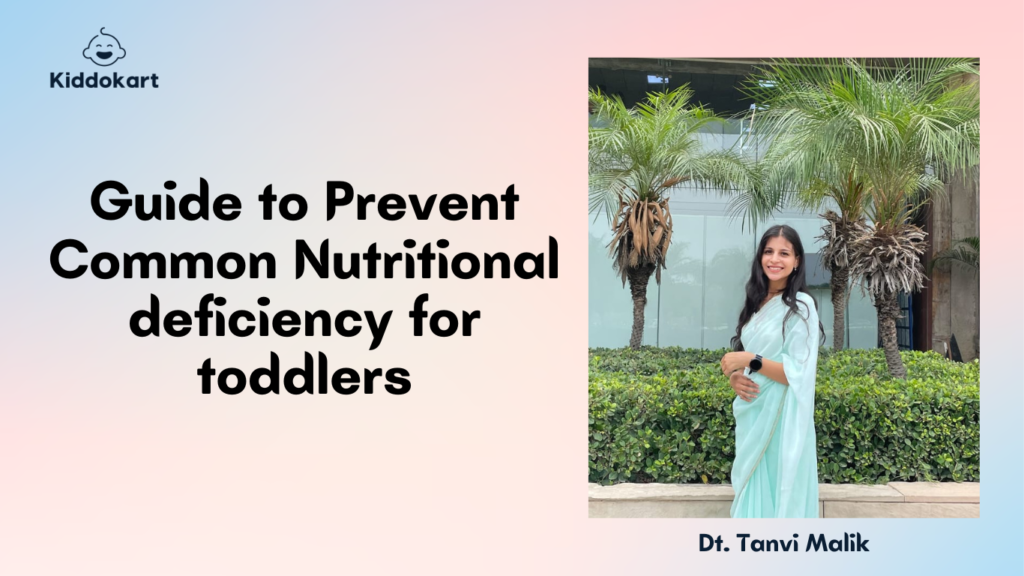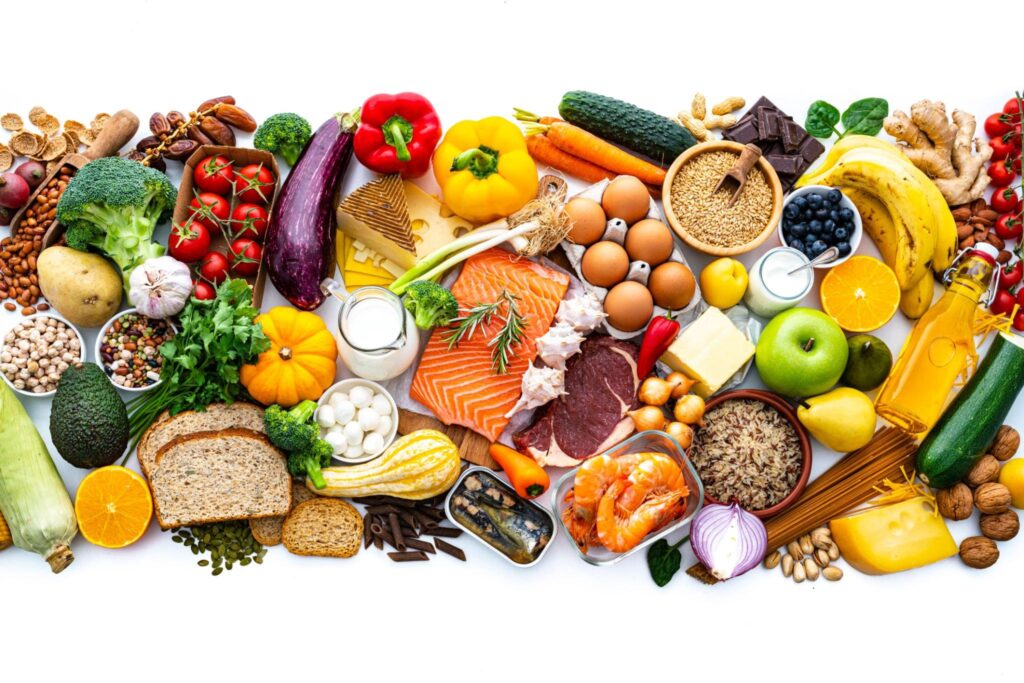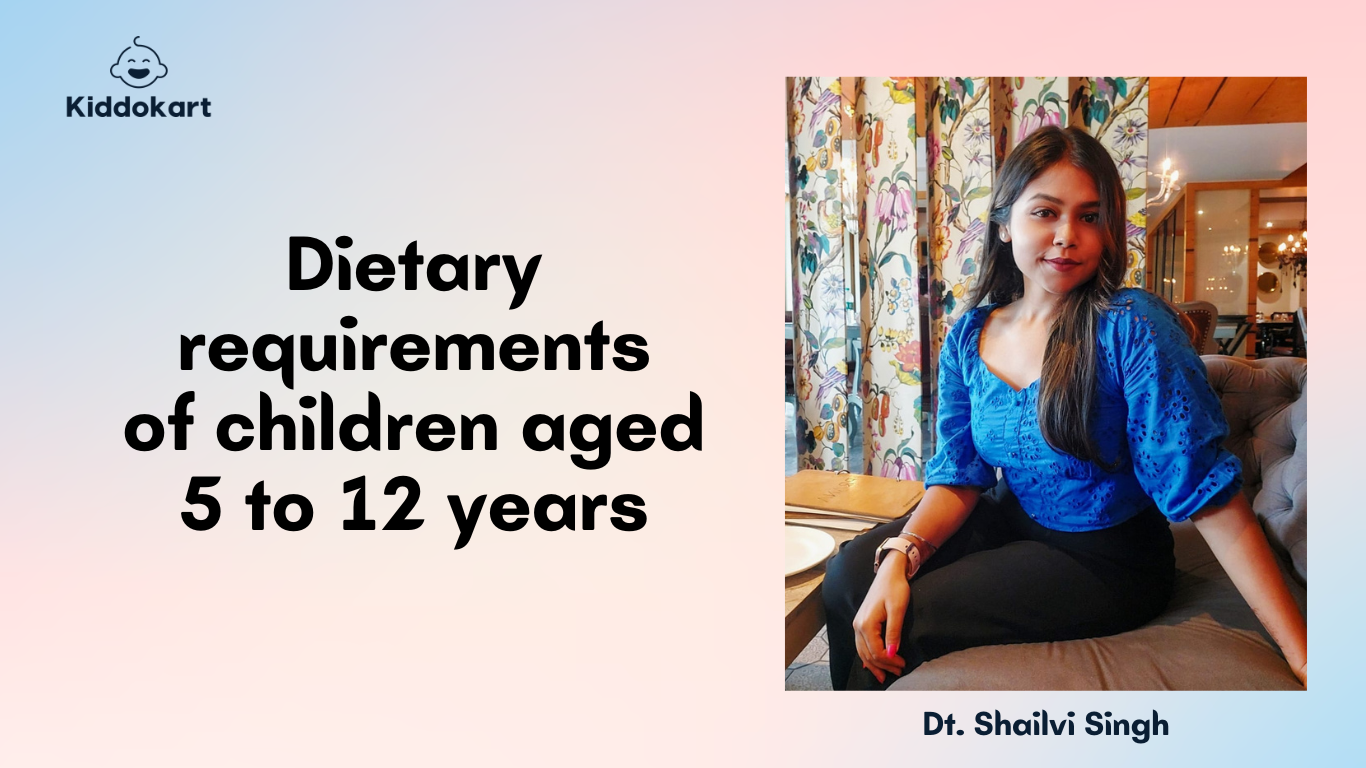Guide to Prevent Common Nutritional deficiency for toddlers

Inadequate nutritional intake in toddlers is a very common concern. Every parent makes an effort to provide for their child’s every need in order for them to have a peaceful and happy life. On that list, food comes first. The concern is whether the children are receiving adequate nourishment from their diet. Parents have been heard expressing that their child appears fragile and has few nutritional deficits despite consuming a large supper.
Due to their rapid growth, children’s nutritional needs differ greatly from those of adults. The nutrients that can help in their growth are what you should focus on. It might be difficult to ensure that your child is getting all the nutrients they need because it depends on what they enjoy and dislike. For kids who are picky eaters, it might become even harder. If your child has a food allergy, you will also need to look for an alternate vitamin.
Typical nutritional deficiency in toddlers include the following:
Vitamin D: – Infants born to moms with low vitamin D levels are said to have a vitamin D insufficiency in Children. Toddlers who are not exposed to the sun, have milk allergies, or are fed only vegan diets are at risk for this deficit. Allow them to spend a few minutes in the sun each day in the early morning hours; this will increase their vitamin D levels.
Vitamin K: – For healthy blood clotting and stopping blood flow, vitamin K is required. Because they don’t get enough vitamin K from breast milk, infants are more at danger. But as they develop, they get through this. The most typical symptoms of children with vitamin K insufficiency include vomiting, irritability, bleeding from the nose, stomach, and intestines. It is important to seek medical counsel right away and take any necessary vitamins.
Most green vegetables and some fruits contain vitamin K. Vitamin K is present in green leafy vegetables such collards, spinach, broccoli, Brussels sprouts, and cabbage. Kiwi, blackberries, and blueberries are a few fruits that are high in vitamin K.
Iron: – Premature infants are more likely to experience this problem. As a result, they are fed formula that has been reinforced with iron. Anemia can result from a low iron level. As soon as they start eating solids, start introducing foods high in iron. Children who just consume vegan meals run a higher danger. It is best to see a doctor if your child appears pale and bruises easily. It is stated that prunes, apricots, pork, and eggs are high in iron.
Vitamin A: – The immune system and eye health both benefit from vitamin A. It aids in preventing childhood blindness. The foods high in vitamin A include milk, eggs, carrots, spinach, broccoli, sweet potatoes, papayas, peaches, and apricots. Include these items every day or every other day in your toddler’s meals.
Calcium: – Your child has to have strong teeth and bones in order to function properly. The symptoms of calcium deficiency in child won’t show up right away. Toddlers may exhibit symptoms such as aches and pains, numbness, and poor memory. All dairy products are abundant calcium sources. Give it to them every day.
How to encourage child to eat healthy & dietary intake?
To maintain your child’s nutrition, make sure you feed him nutritious foods. Most parents worry about their narrow child’s weight and view them as unhealthy. But they should be aware that children who are overweight are more likely to have health issues. A balanced diet for kids that is followed on a daily basis is the secret to living a long and healthy life. Offer your child enticing homemade food to help him establish a healthy appetite; avoid serving the same dish too often; and sit with the child to eat with him so that he feels at ease and doesn’t miss meals. Always keep in mind that the most nutrient dense foods are those that may be found and prepared at home.
The greatest beverages for your child include everyday substances like milk, vegetable soup, and coconut water. Always seek medical advice so that you can provide your child a balanced and healthy diet.
How to correct toddlers' deficiencies in food and guide to prevent common nutritional deficiency for toddlers
- Include your child’s favorite’s food in your meal plans.
- Give them high-calorie snacks, like yoghurt, eggs, pudding, cheese, sandwiches, breadsticks, etc. instead of packaged sandwiches or drinks.
- Try including more protein and fat while avoiding sweets.
- Like peanut butter, fish, hummus, cow milk, olive oil, nuts.
- More often, give smaller and frequent meals.

FAQs
Here are some FAQs regarding signs of nutritional deficiencies in children, nutritional deficiencies in toddlers, vitamin deficiency in toddlers, child nutrition, and child nutrition food, along with their answers:
Q: What are the common signs of nutritional deficiencies in toddlers?
A: Common signs include slow growth or stunted height, fatigue, frequent illness, poor appetite, delayed development, and pale skin.
Q: How can I identify if my child has a vitamin deficiency?
A: Vitamin deficiencies can manifest in various ways. For example, a vitamin D deficiency may cause weak bones and increased susceptibility to infections, while a vitamin C deficiency can lead to scurvy and weakened immune function.
Q: What are the symptoms of iron deficiency in toddlers?
A: Symptoms of iron deficiency can include fatigue, pale skin, frequent infections, poor appetite, irritability, and delayed growth and development.
Q: Are there specific signs to look for in case my child lacks calcium in their diet?
A: Common signs of calcium deficiency can include weak bones, tooth decay, muscle cramps, numbness or tingling in hands and feet, and an increased risk of fractures.
Q: What are the consequences of inadequate nutrition in toddlers?
A: Inadequate nutrition can lead to poor growth and development, weakened immune function, increased risk of illness and infections, cognitive and behavioral issues, and nutrient deficiencies that may have long-term effects.
Q: How can I ensure my child is getting all the necessary nutrients in their diet?
A: Offer a variety of balanced and healthy diet / meals that include fruits, vegetables, whole grains, protein sources, and dairy or alternatives. Consulting with a pediatrician or a registered dietitian can provide personalized guidance.
Q: What are the best food sources for promoting healthy child nutrition?
A: Some nutrient-rich food sources for children include fruits and vegetables, lean protein (such as chicken, fish, and legumes), whole grains, dairy or alternatives, and healthy fats like nuts and avocados.
Q: Are there any particular vitamins or minerals that toddlers are commonly deficient in?
A: Common deficiencies in toddlers can include iron, calcium, vitamin D, vitamin B12, and vitamin C. However, individual needs may vary, so it’s important to consult with a healthcare professional.
Q: How can I incorporate more fruits and vegetables into my child's diet?
A: You can introduce a variety of fruits and vegetables in creative ways, such as adding them to smoothies, pureeing them into sauces or soups, or offering them as finger foods with dips like yogurt.
Q: Are there any recommended supplements for toddlers who have nutritional deficiencies?
A: The use of supplements should be discussed with a healthcare professional. They can provide guidance on whether a supplement is necessary and recommend appropriate options based on individual needs.
Remember, it’s always advisable to consult with a healthcare professional or pediatrician for specific concerns about your child’s nutrition and dietary needs.

Meet Certified Dietitian Tanvi Malik
She is passionate about transforming lives through wholesome nutrition. With a strong academic background and a heart full of empathy, Tanvi is dedicated to guiding you on a journey to a healthier you.
Follow Dt. Tanvi Malik on Instagram
“Explore our website for a curated range of baby and kids products designed to promote learning and growth!”










